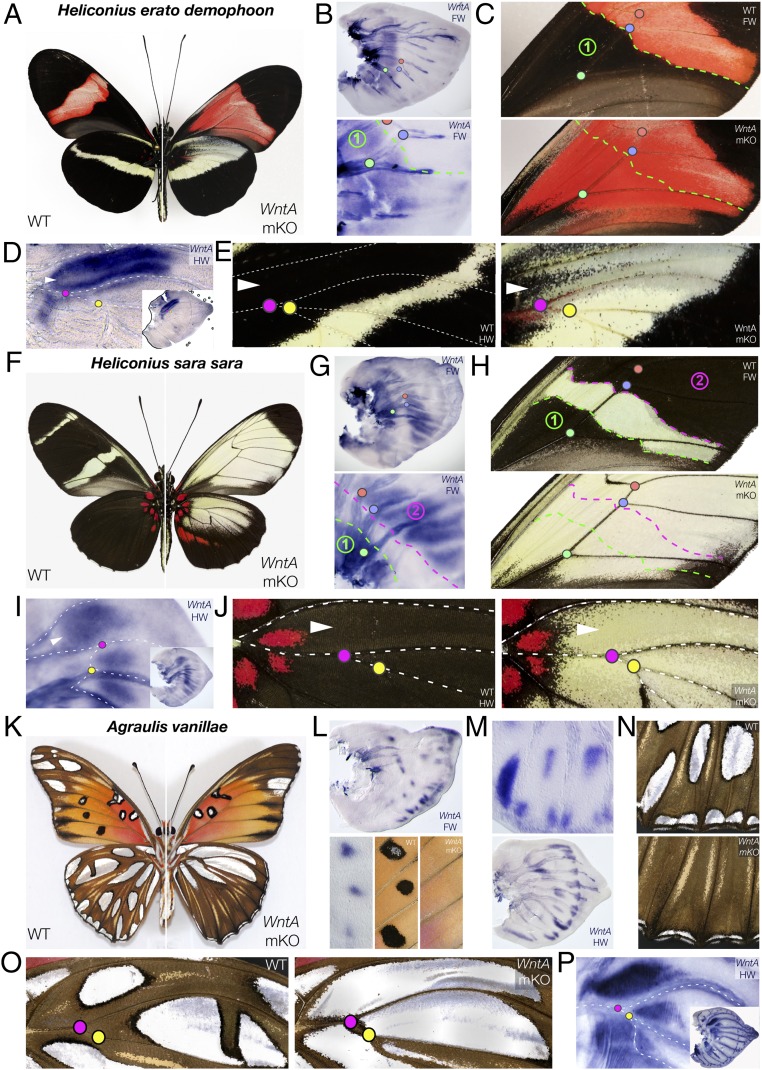Fig. 3.
Variegated WntA loss-of-function phenotypes in passionvine butterflies. (A–E) Effects of WntA mKO in H. e. demophoon. (A) Whole wings. (B) Detection of WT proximal WntA expression by larval forewing in situ hybridization (zone 1). (C) Loss of proximal pattern boundary in WntA-positive zone 1. (D) Antero-proximal expression of WntA in WT late larval hindwings. (E) Loss of antero-proximal pattern boundary in mKO hindwings. (F–J) Effects of WntA mKO in H. sara. (F) Whole wings. (G) Detection of proximal (zone 1) and median (zone 2) WntA in larval forewings. (H) Loss of proximal (green line) and median (fuchsia line) pattern boundaries resulting in loss of melanic identity in zones 1 and 2. (I) Antero-proximal expression of WntA in larval hindwings. (J) Widespread antero-proximal color identity shift in mKO hindwings. (K–P) Effects of WntA mKO in A. vanillae. (K) Whole wings. (L) Silver-spot–related expression of WntA in larval forewings and loss in mKO forewings. (Bottom) M3-A1 spot triad. (M and N) Silver spot-related expression of WntA in larval hindwings (M) and loss/reduction in mKO hindwings (N). (Top) M3-A1 spot complex. (O) Silver-spot pattern expansion in proximal mKO hindwings. (P) Secondary expression of WntA in the proximal region of late larval hindwings. Colored dots: wing topological landmarks (vein crossings).

